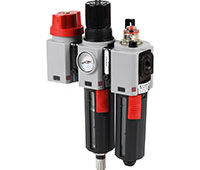Leland Teschler – Executive Editor
On Twitter @DW—LeeTeschler
Teschler on Topic
Google is famous for a job interviewing process that includes asking open-ended questions having no answers. Of course, the point of such queries as, “How much does the Empire State building weigh?” isn’t to get the right answer. It is to demonstrate a logical thinking process by breaking the problem down into manageable chunks.
Google isn’t the only company that wants to hire people who can work through obstacles in organized ways. Most companies looking for engineers want logical problem solvers. But the usual approach during engineering interviews is to ask questions that do, in fact, have answers. And getting them can be a harrowing experience if you aren’t completely prepared. Those of us who have looked for engineering jobs a time or two generally have war stories about interview questions.
Perhaps most nerve wracking are the interviews you have fresh out of engineering school when you realize there is a lot about engineering you still don’t know. With all the recent hand-wringing in the media about a dearth of engineering graduates, I got curious as to how young engineers fare these days when they bump up against interview questions. So I spoke with Dave Hein, VP of engineering at Nexen Group in Minnesota, a company that periodically hires mechanical engineers to design the motion control and power transmission components Nexen makes.
Hein said prospective MEs don’t have to worry about demonstrating technical skill during their initial interview at Nexen. That’s only for candidates who make it to the second round. “In the second round we ask three questions that are structured so you should be able to answer them if you understand basic engineering principles that apply to Nexen technology. Typically the first question is a linear motion problem. The second covers rotational motion. The third is in basic pneumatics.”
And how do the kids make out? “Probably 70% get only one problem right. Perhaps 15 to 20% get zero correct. I believe we’ve had only two people get all three right. And they are not hard questions,” he said. “Most people don’t account for gravity in the linear question. They neglect to factor in that the mass is moving vertically. In the rotational question, we find that few people really understand inertia.”
But you don’t have to ace the quiz to get hired. Hein said the quiz results are just a small part of the overall interview process, which mainly involves discussions with engineers the candidate could end up working with.
Prospective employees who get through the second round come back for a final interview. This one is with a couple of key stakeholders and may involve a multiple-choice quiz. “This second quiz is more oriented toward engineers who have been working in the field for a few years. We might ask about geometric tolerencing symbols, about whether a particular grade of steel can be heat treated, or about plating processes that prevent corrosion,” he said.
As at Google, the upshot of Nexen’s interviewing process is to see what kind of intellectual horsepower prospective hires bring with them. “We want their thinking process to be correct even if their answers are wrong,” said Hein. All in all, Google’s off-beat interview style seems to work for Google; and Nexen’s more traditional approach seems to work for engineering companies like Nexen.
Filed Under: Hose • wraps + sleeves, Commentaries • insights • Technical thinking, Pneumatic equipment + components





Tell Us What You Think!